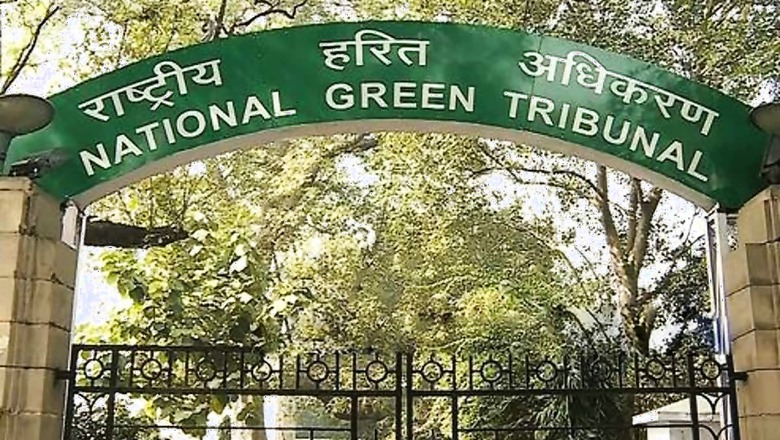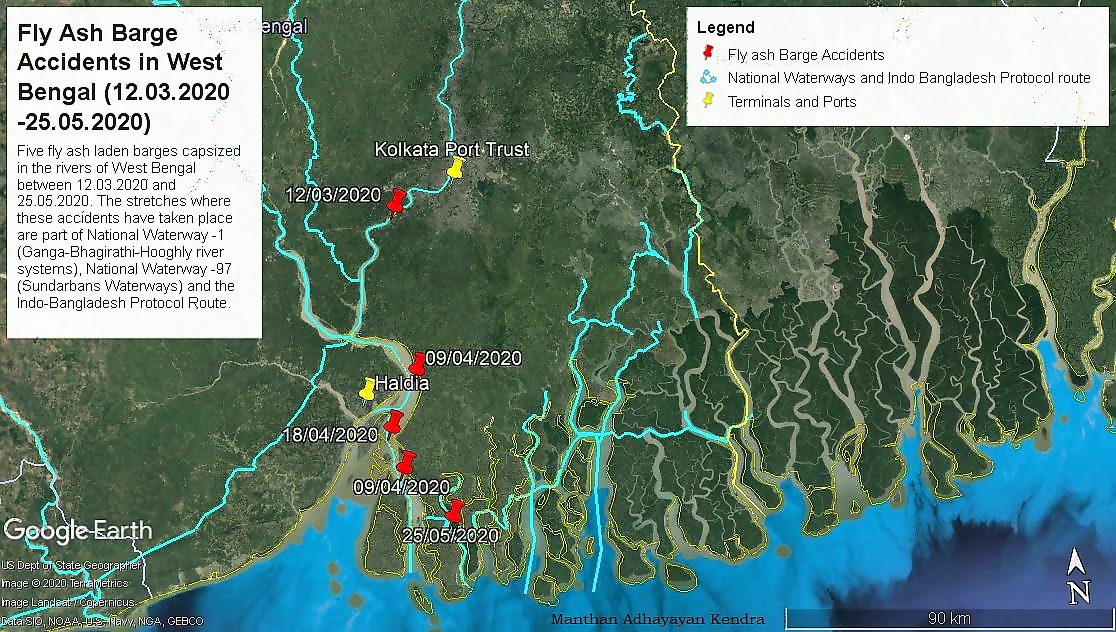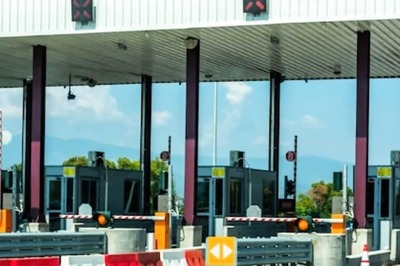
views
New Delhi: The inland waterways system, touted by the government as a cleaner mode of transport than rail and road transport, has come under the National Green Tribunal’s (NGT) scanner for pollution in the Hooghly River and the fragile Sunderbans ecology.
The green tribunal admitted a plea filed by a fishworkers trade union, Dakshinbanga Matsyajibi Forum, against frequent accidents and capsizing of barges carrying dirty fly ash on the National Waterway (NW) 97, also known as the Indo-Bangladesh Protocol Route.

The Tribunal’s Kolkata bench, comprised of judicial member justice S.P.Wangdi and expert member Nagin Nanda admitted the plea this week on October 19, served notice to the respondents and ordered them to respond in six weeks.
The respondents include the Inland Waterways Authority of India (IWAI); Ministry of Environment, Forest and Climate Change; Central Pollution Control Board; West Bengal government; state pollution control board and national biodiversity authority
While admitting the plea and serving notice, the bench of judicial member Justice S.P.Wangdi and expert member Nagin Nanda also constituted an expert member made up of only of government members to verify the ‘factual aspects set out in the application’ after physical verification of the area. It also ordered the committee to probe as to why these accidents were happening and suggest measures to prevent the accidents and also to manage fly-ash that has already discharged in the rivers.
A member each from CPCB and West Bengal State Pollution Control Board, district collector of South 24 Parganas district and Principal Chief Conservator of Forest (Wildlife), West Bengal, will be part of the NGT committee.
Barge accidents and riverine pollution
In this year alone, there have been five accidents on the NW-97 route as per government data, the plea said based on documents accessed under Right to Information, Act. In two of these five accidents over 1,500 tonnes of fly-ash being transported on barges sank in the Hooghly river in and Hatania Doania river, both of which flow through the South 24 Parganas district. No information was available on the quantum of fly-ash that sank in the Hooghly or other rivers as a result of the other accidents.
The plea also pointed to the crucial fact that the amount of fly ash exported to Bangladesh on barges through rivers is well above the quantity that has been stipulated in the consent granted by the West Bengal Pollution Control Board. The fishworkers union cited a 2017 report of the Comptroller and Auditor General of India which said that in 2014-15, 5.97 lakh metric tonnes of fly ash was exported, as opposed to 1.2 lakh metric tonnes permitted.
The capsizing of barges and discharge of toxic fly ash in the riverine system was a violation of the Water (Prevention and Control of Pollution) Act, 1974, and Environment Protection Act, 1986, the plea said.
The fishworkers union also made a serious allegation that movement on the NW-97 route was happening without an environment impact assessment and a coastal clearance from the Ministry of Environment, Forest and Climate Change. “It is pertinent to note that the entire Sundarbans area constitute CRZ IA areas which are identified as highly ecologically sensitive areas. As per the provisions of the CRZ Notification, 2019,” the plea said.
The union has sought accountability from the IWAI and barge owners for the damage to environment and added that they should pay up for the pollution caused by the sinking of fly-ash. It has also sought directions to compensate around 5,000 families involved in small and traditional fishermen, whose livelihood has been affected due to pollution and its impact on fish catch.
Inland waterways and fly-ash cargo movement
The Narendra Modi-led government has aggressively pushed for development of inland waterways transport across the country and 111 inland waterways have been declared as national waterways (NW) under the National Waterways Act, 2016.
As per government data, 11 national waterways are operational as of now. The NW-97, also known as the Sunderbans waterway, between India and Bangladesh, sees high movement of fly-ash, the primary waste generated from coal-fired power plants.
In fact, the toxic coal waste which contains heavy metals accounts for 97 per cent of cargo movement on the Indo-Bangladesh route, the plea before NGT stated citing IWAI’s annual report. IWAI, under the Ministry of Shipping, is the nodal authority for developing and maintaining infrastructure for inland waterways in the country.
The government also said in a press release this May that fly-ash the export cargo from India to Bangladesh is mainly fly-ash, which is to the tune of 30 lakhs metric tonnes per annum. “Around 638 inland vessels, including 600 Bangladeshi flag vessels, completed approximately 4,000 loaded voyages annually.”
Most of the fly-ash cargo is sources from coal-fired power plants in West Bengal, though the exact sources were not known, either through the plea or independently.
Read all the Latest News and Breaking News here
















Comments
0 comment